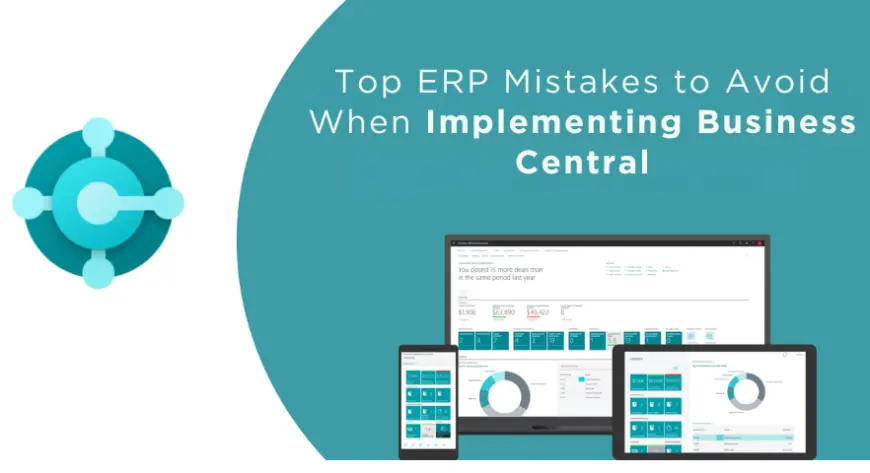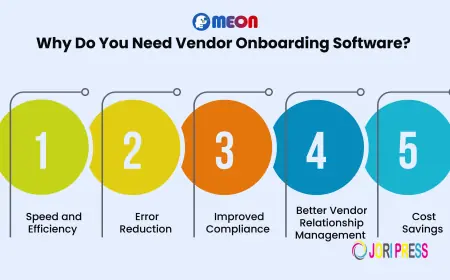Top ERP Mistakes to Avoid When Implementing Business Central

Introduction
For organizations, implementing Dynamics 365 Business Central is a major endeavor in automating business processes, seeing their financial position, and productivity improvements. A project Adona has put in place to tackle their business issues. But projects, without planning can quickly veer sideways by having delayed timelines and budgets that impede the organization's success in achieving their goal. This guide outlines common pitfalls to avoid on implementations of Dynamics 365 Business Central and how to plan for successful implementations to provide a safe landing in the ensuing turbulence.
1. Jumping in without planning
One of the most common pitfalls is jumping into a Dynamics 365 Business Central implementation without planning. Organizations don't understand or don't develop prudent and thoughtful planning and scope. If an organization does not develop defined goals, timelines, and a definition of success, it will be plagued with scope creep and uncertainty. The organization with a defined plan can circumvent that by using the plan to align ERP capability with business objectives.
2. Lack of Executive sponsorship
ERP projects require strong sponsorship and ownership from leadership. When there is no executive champion, the implementation of Dynamics 365 Business Central can stall altogether (chapter 20). Leaders must not only authorize expenditure within budget but also actively engage in governance, communication, and conflict resolution to address instances of misalignment that may occur and have the proclivity to impact the project forward or backwards.
3. Neglecting User Training and Change Management
This one may seem obvious: a new ERP implementation that employees won't adopt will not succeed. However, many organizations skip training when implementing Dynamics 365 Business Central. Change management should include targeted training, hands-on workshops, and ongoing support to minimize resistance to the system and push the organization to adopt it.
4. Insufficient Data Migration Planning
Data is the heart of ERP. If you migrate broken, missing, or duplicate records to Dynamics 365 Business Central, expect your reporting, and work, to be ineffective. Time and resources need to be spent on data cleasing, mapping, and validation before you go live. Performing a test migration is one of the most effective ways to ensure your system is working properly on Day 1.
5. Assigning ERP as a 'Side Project'
Some organizations believe employees will take time to implement Dynamics 365 Business Central while managing their regular workload; this rarely works. If Dynamics 365 Business Central is treated like a side project, you can expect delays and a poor outcome. Assign project managers and provide full-time resources to key positions to keep them focused and accountable.
6. Over-customizing the System
Over-customization is a common trap. Even though Dynamics 365 Business Central allows for flexibility, customizing your system unnecessarily can add complexity and cost for future product updates. Customization should just be done when it truly delivers business value, and rely on the out-of-the-box product wherever you can.
7. Ignoring Business Process Alignment
Another mistake is trying to burn out those outdated workflows in the new ERP. Implementing Dynamics 365 Business Central should fuel a process improvement initiative - not a step backwards to replicate duplication and inefficiency. Organizations should look to analyze, redesign and align those processes according to best practices from the system.
8. Inadequate testing before Go-Live
Poor tell or lack of testing is a failure. If you do not test those real-life scenarios, the issue won't show until you Go-Live. Involving end-users with their procedures and workflows while testing helps to close any gaps, improves the system usability, and ensures Dynamics 365 Business Central works appropriately for their regular day-to-day operation.
9. Neglecting post-Go-Live support
The Go-Live date should never be viewed as the conclusion of the project. If users do not receive continued support, then they will get lost with the new ERP; even worse, they may abandon the new software. Companies should plan a structured post-Go-Live initiative for Dynamics 365 Business Central to provide on-going support, training, monitoring, and ongoing system updates.
10. Setting unrealistic expectations
Ultimately, an unreasonable expectation might be hoping everything just falls into place and you get instant results from Dynamics 365 Business Central. It is crucial to realize that an ERP implementation is a journey involving time, resources, and patience. Establish realistic milestones, communicate the status of your progress, and fully embrace your early achievements to increase confidence in your use of Dynamics 365 Business Central across the entire organization.
Final thoughts
Avoiding these common pitfalls will not only save you precious time and money but enable you to enjoy the benefits of Dynamics 365 Business Central sooner than you might have thought possible. Especially when you start planning in advance, manage, and ensure data quality, promote user adoption, and importantly continuous improvement of your use of Dynamics 365 Business Central. Transforming an ERP implementation into a long-term, enduring, success story requires, time, patience, and proper planning.
Frequently Asked Questions
1. What is the time expected to implement Dynamics 365 Business Central?
The timeline of an implementation is dependent on the size of the company, the complexity of the data to be migrated and how customized your solutions need to be. On average we see projects take somewhere between 3 and 9 months.
2. What are the biggest risks of getting data migration wrong in Business Central?
The most significant risk of migrating bad data into Dynamics 365 Business Central is, of course that the data will eventually be useful for reporting purposes. The second risk is that there will be compliance issues due to misreporting. Finally when data is incorrect users will be left frustrated and may eventually give up using Business Central altogether. There is value in taking to time to put together a structured data cleaning project to minimize the impact of the risks just mentioned.
3. Can I customize Dynamics 365 Business Central to my business?
Yes, you can customize Dynamics 365 Business Central, but the more you customize the further away you get from the "out of the box" solution. Best practice is to draw from the built-in benefits of the solution and only customize if you to accommodate unique business requirements.
4. Why is change management so important to ERP success?
Change management simply means that your employees will need to change how their work and the tools they are, sino-factoring your staff's acceptance and efficient use of Dynamics 365 Business Central, or otherwise, to earn an ROI on the investment.
5. What happens after we go live with Dynamics 365 Business Central
Post go-live is an important period of stabilizing the operational side of the business, while supporting users and gradually implementing additional enhancements. An ongoing training program, and continuing to monitor the system for areas of improvements, will help you maximize the benefits of the platform.
What's Your Reaction?
 Like
0
Like
0
 Dislike
0
Dislike
0
 Love
0
Love
0
 Funny
0
Funny
0
 Angry
0
Angry
0
 Sad
0
Sad
0
 Wow
0
Wow
0



















































